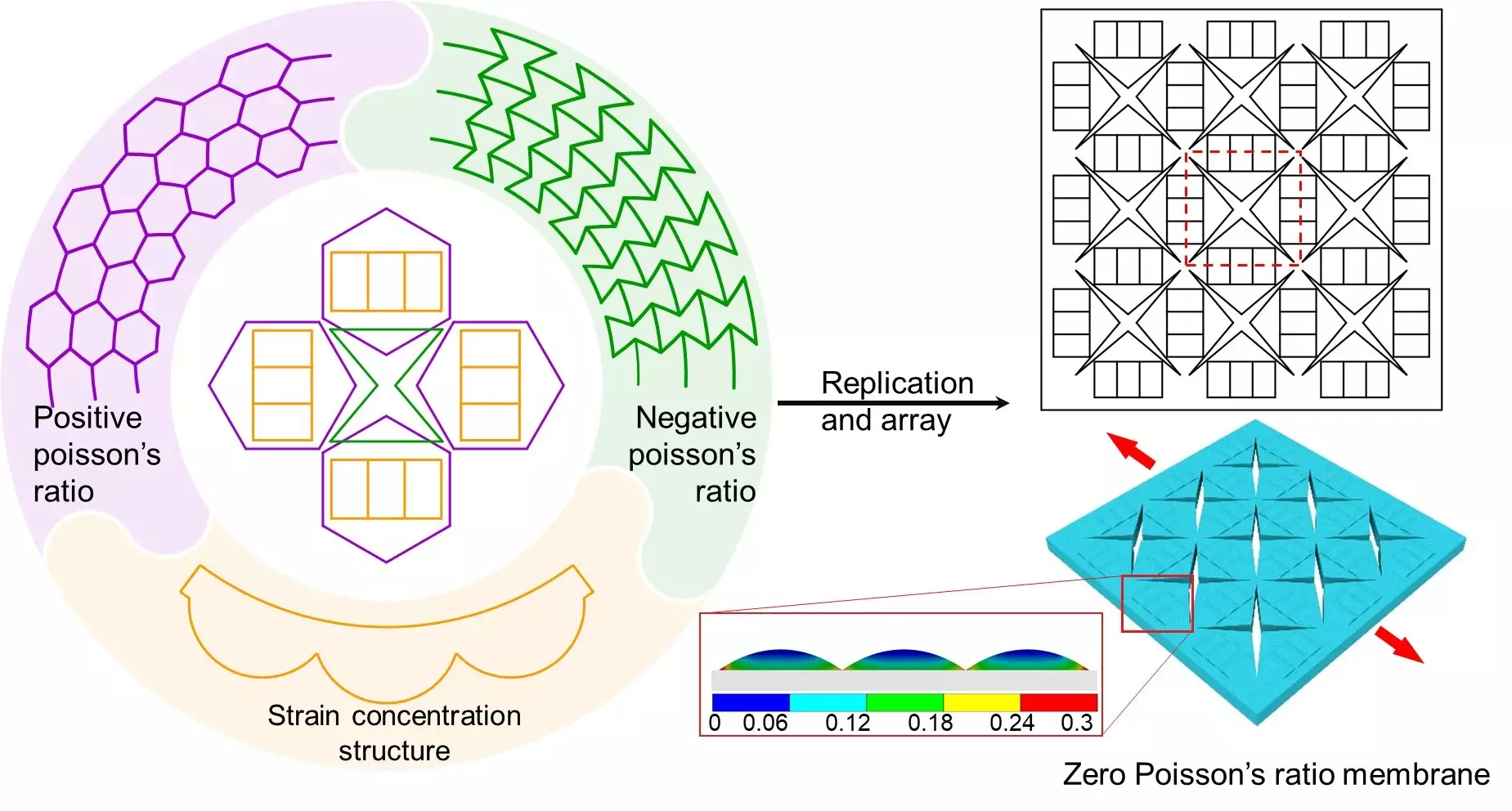Flexible sensors have undergone significant advancements in recent years, offering a wide range of sensing capabilities. However, measuring complex deformations resulting from forces or strains from multiple axes poses a significant challenge. The lack of independent perception of multi-axial stimuli due to the Poisson’s effect of sensing materials hinders accurate measurement of biaxial stimuli.
Researchers have identified zero Poisson’s ratio (ZPR) materials as a potential solution to the interference issues in perceiving biaxial or multi-axial stimuli. These materials maintain a constant transverse width under longitudinal strain, offering the possibility of independent perception of biaxial stimuli. Despite the benefits, preparing zero Poisson’s ratio elastomer membranes presents a considerable challenge due to the incompressible property and the nearly 0.5 Poisson’s ratio of elastomers.
Professor Hao Wu and Dr. Xin Huang from Huazhong University of Science and Technology’s Flexible Electronics Research Center proposed an innovative approach to address the challenge. They suggested that a combination of traditional positive Poisson’s ratio (PPR) structure and negative Poisson’s ratio (NPR) structure could lead to the creation of a zero Poisson’s ratio structure.
The research team discovered that the Poisson’s ratio of the hybrid structure was a superposition of the Poisson’s ratio of the individual structures. By adjusting the feature size and width of the hybrid structure, the researchers were able to vary the Poisson’s ratio between positive and negative values. Finite element analysis was utilized to identify the optimal parameters for achieving the zero Poisson’s ratio membrane.
Enhanced Sensing Capabilities
The PDMS membrane with the hybrid structure exhibited a significantly lower Poisson’s ratio of 0.07 compared to 0.43 for the PDMS membrane without the hybrid structure. This decrease in Poisson’s ratio emphasized the effectiveness of the hybrid structure in improving sensing capabilities. The ZPR flexible sensors based on these membranes could accurately detect uniaxial stimuli and independently detect biaxial stimuli.
The ZPR flexible sensors offer enhanced capabilities for detecting force, strain, and motion status in scenarios involving robotic manipulation and locomotion with complex deformation. These sensors can accurately measure contact forces between rigid manipulators and grasped objects, regardless of the deformation of the grasped objects. By combining perpendicular sensing units on manipulators’ fingers, the sensors can indicate normal bending of fingers and unexpected collisions with obstacles. Additionally, the sensors can detect locomotion distance and direction of biaxial soft robots.
According to Professor Wu, the exotic sensing capabilities of ZPR sensors hold great potential for applications in healthcare, human-machine interfaces, and robotic tactile sensing. The unique abilities of these sensors to accurately detect various stimuli make them invaluable tools in a wide range of fields.
The development of zero Poisson’s ratio flexible sensors represents a significant advancement in the field of sensing technology. The innovative approach of combining traditional PPR and NPR structures has allowed for the creation of sensors with enhanced capabilities in perceiving and detecting complex stimuli. With their potential applications in various industries, ZPR flexible sensors are poised to revolutionize the way we interact with technology and machines.


Leave a Reply